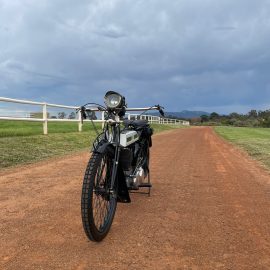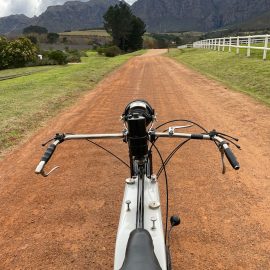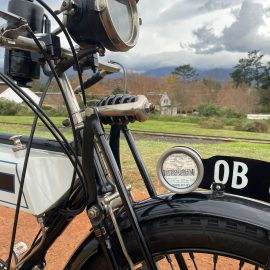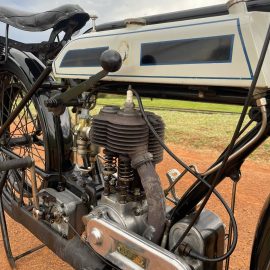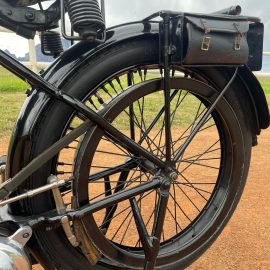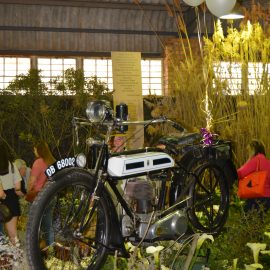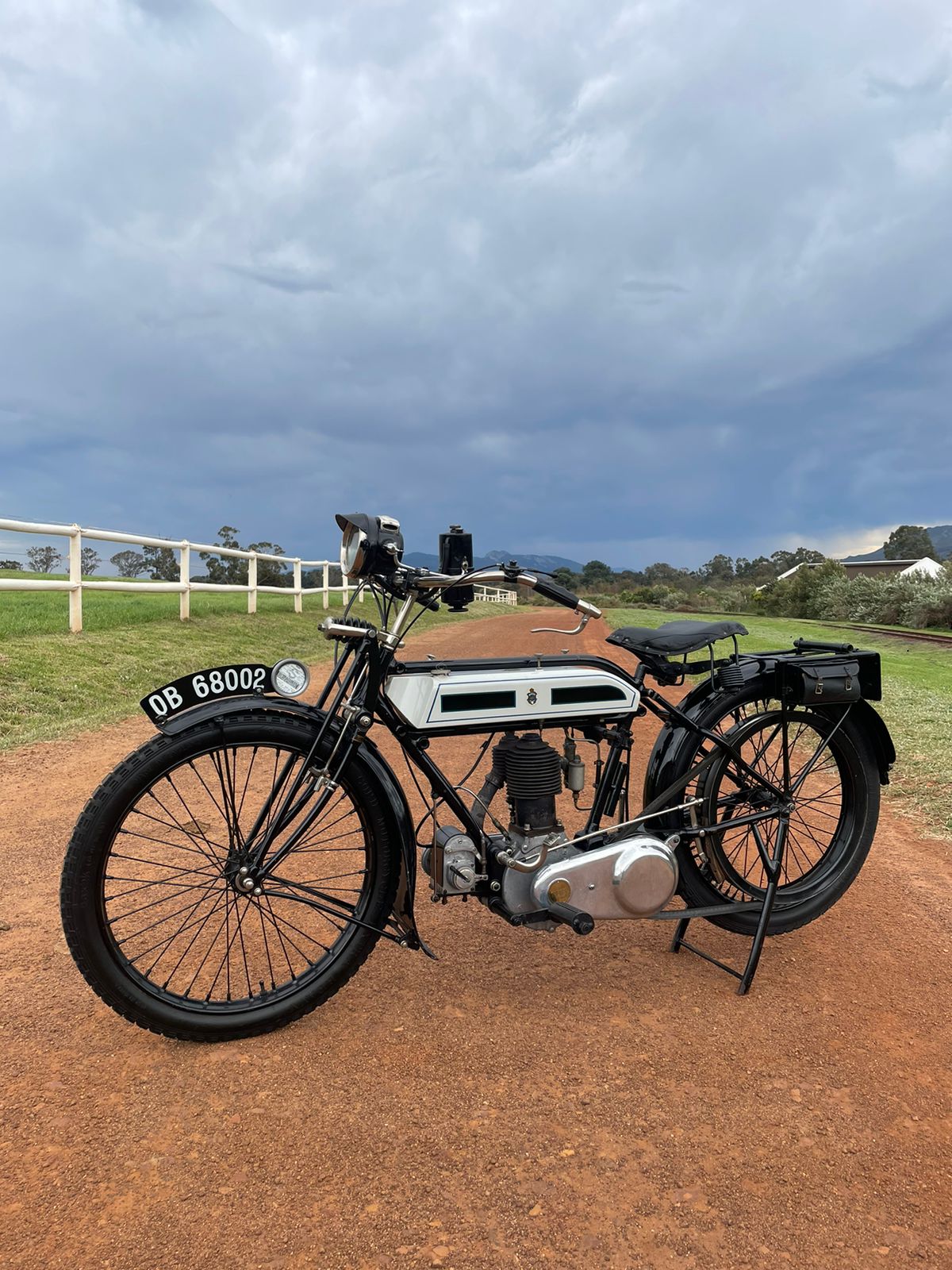
31 May On Yer Bike: 1917 Triumph Model H
FMM Curator Wayne Harley describes a machine in the collection that has ‘slipped through the slats’ and goes forth in Triumph…
It is strange after all the years that I’ve been writing the On Yer Bike column I’ve never done a technical feature on the museum’s 1917 Triumph Model H. Back in our September 2017 newsletter when it was in its centennial year, we reported on it having been put on display at the Darling Wild Flower Show, and it also took part in the Crankhandle Club’s Kalk Bay Run, a rally for vehicles 100 years or older. Yet somehow I have never featured this gorgeous little motorcycle or elaborated on its history.
The name Triumph is first mentioned in connection with bicycles as early as 1887 when Siegfried Bettmann and Mauritz J Schulte started to sell German-made bicycles for their import and export agency in London, S Bettmann & Co. By 1902 the company had moved on to producing motorised cycles with their first motorcycle being fittingly labelled as No. 1, which was a stylish and very successful 2,2 hp single-cylinder machine. In 1907 Triumph moved into its own production facility in Priory Street in the City of Coventry, England, and production increased rapidly from only a couple of hundred units to over 3 000 a year. Many model types with new technical changes were being introduced all the time: from 1907 to 1914 saw the introduction of the Model A, Model Roadster, Model TT, Model C and others leading up to this month’s featured motorcycle, the Model H, which became available in 1915.
What makes the Model H special is that it was selected by the British Government as the motorcycle of choice as standard equipment for their dispatch riders during the war effort. As I’ve mentioned before, sadly, war does bring out new and rapid innovation and the Model H was no exception. This was the Coventry plant’s first Triumph motorcycle not to feature bicycle-style pedals and to be fitted with a three-speed Sturmey-Archer gearbox. Triumph also introduced a more powerful 4 hp (2,9 kW) 550cc engine with a new, twin mechanical-cam operated valve system and a new cylinder casting design. These improvements not only increased power output but also improved reliability, and the Model H soon became known as ‘The Trusty’, a valuable asset in war time. Almost 30 000 Model H motorcycles were produced during WW1, and FMM’s 1917 model was just one of these units.
After the war, the Model H was seen to be slow and not competitive, so Triumph introduced the Model R to meet with demand for a sportier machine. However, Triumph continued to produce the Model H until 1926, and by that time a total of 57 000 machines had been produced, bearing testament to its build quality and reliability.
FMM’s example was formally part of the Waldie Greyvensteyn collection in Bloemfontein. The motorcycle had been standing for some time so coaxing it back to life took a little TLC. The age-old problems of old fuel, blocked pipes and gummed up carburettors all needed attention. Then there was the magneto to sort out as it wasn’t giving any spark, and also the oiling system was leaking. The overall condition of the rest of the bike was generally very good, so the museums outstanding cleaning staff got to work and soon the Triumph was looking stunning.
I had the bike running sweetly again in only a few weeks and, true to her name, The Trusty has never given us problems since. The motorcycle pulls extremely well and has enough power to climb most inclines in second gear. Third gear is really only good for gentle hills, and the open road and provides a safe cruising speed of around 50 km/h. Riding this Model H, straight away one can tell that this is a vintage motorcycle, which had only a little more technology than a bicycle of the time! The seating position is similar to all other motorcycles of this era – straight up, knees up, arms and feet forward, almost like sitting on a kitchen chair.
With very wide handlebars, at slow speeds it’s not the most stable motorcycle I’ve ever ridden. Being the first Triumph to sport the Sturmey-Archer gearbox, it has a rather crude gear selection, almost a bit of a ‘hit or miss’ affair, but this could also be more to do with age and worn parts and linkages, But with time and sympathy, a person does get by with only the odd missed gear. Stopping the motorcycle takes a lot more forward planning than normal, so when navigating traffic a rider must be very aware of the prevailing conditions as it is not possible to stop quickly. However, back in the day, on muddy tracks and roads with a lot less traffic I’m sure the mechanical friction-type brakes were more than enough, and with bombs and bullets flying around I don’t think a rider was concerned with stopping too much…
As one of FMM’s oldest running motorised vehicles, it is extremely rewarding to ride, especially if you let your imagination go free and just think of what this bike might have been doing in its heyday!
The 1917 Triumph Model H is currently on display in Hall A.




